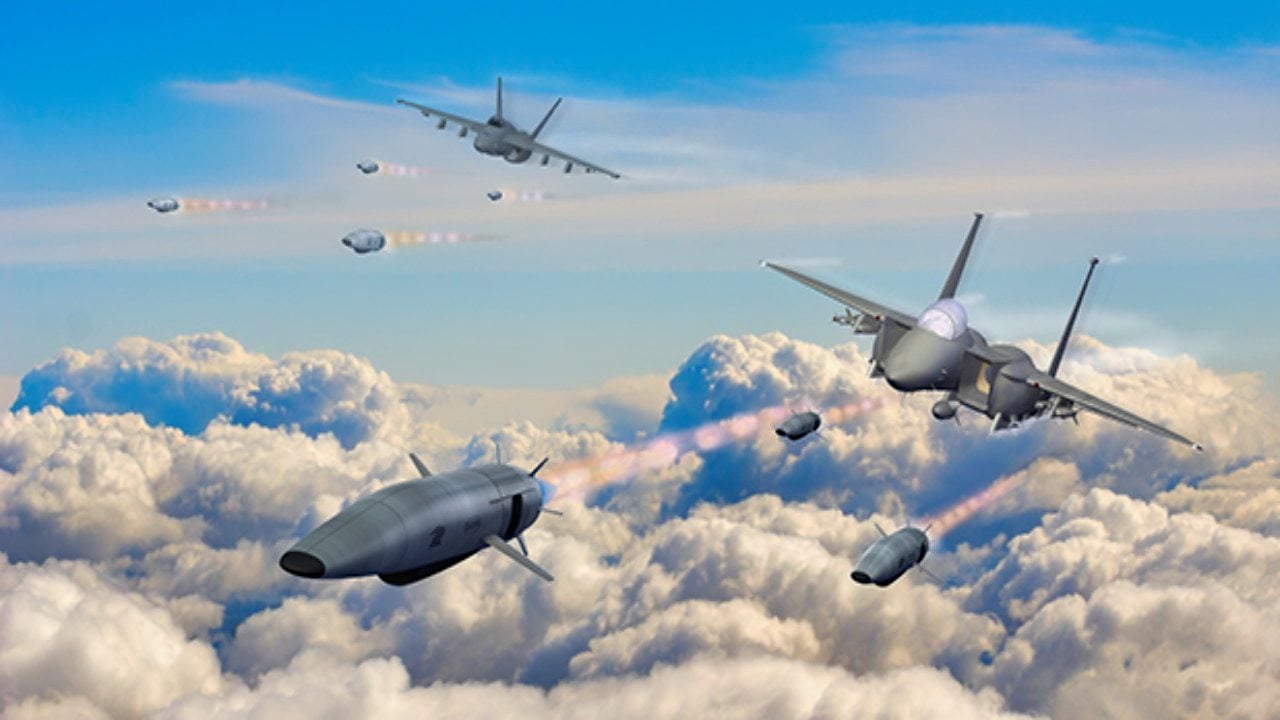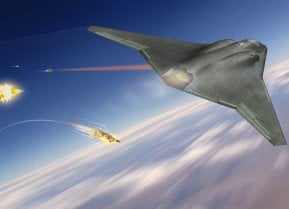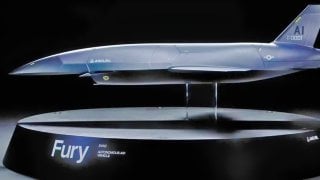The Collaborative Combat Aircraft Could Transform the Air Force
The U.S. Air Force’s Collaborative Combat Aircraft (CCA) program has reached a major milestone, with Anduril’s "Fury" and GA-ASI’s "Gambit" unmanned aerial systems passing critical design review.
What You Need to Know: The U.S. Air Force’s Collaborative Combat Aircraft (CCA) program has reached a major milestone, with Anduril’s "Fury" and GA-ASI’s "Gambit" unmanned aerial systems passing critical design review.

-These unmanned systems are part of the broader Next Generation Air Dominance (NGAD) initiative, which has paused development of a sixth-generation manned fighter. The CCA, designed for affordability and scalability, aims to deliver at least 1,000 units by 2030. These "loyal wingmen" will support manned fighters in roles like reconnaissance and decoy operations, focusing on cost-effective mass production.
-Maiden flights are set for 2025, with production contracts expected in FY26.
The Collaborative Combat Aircraft is Coming Into Focus
The future of the U.S. Air Force's Next Generation Air Dominance (NGAD) program isn't clear – as the service has put the efforts to develop a sixth-generation manned fighter on pause – but one of the related systems continues to move forward. Earlier this year, Anduril and General Atomics Aeronautical Systems (GA-ASI) were awarded contracts to continue the development of Collaborative Combat Aircraft (CCA), the unmanned aircraft component.
The designs from the two firms have now passed the critical design review (CDR) stage, a key milestone in Increment 1 for the program. This clears the way for the two companies to move to the production phase.
"We've just finished up, basically, critical design review for both Anduril and General Atomics. Both industry teammates are on the path to get to first flight in a timeline that allows us to get operational capability by the end of the decade," Col. Timothy Helfrich, senior materiel leader for Air Force Materiel Command's Advanced Aircraft Division, said during a panel at the Mitchell Institute's Airpower Futures Forum, per DefenseScoop.
Beating Out the Aerospace Giants
Auduril's "Fury" and GA-ASI's "Gambit" unmanned aerial systems (UAS) were selected over competing offerings from Boeing, Lockheed Martin, and Northrop Grumman.
All three companies had originally been competing for the contract to develop the sixth-generation manned fighter that was to be the centerpiece of the NGAD program, but Northrop Grumman withdrew – only to later state it might jump back in. While the program is officially paused, it is likely that the research and development (R&D) and design work continues at the respective companies.
It is likely a matter of when, not if, the Air Force opts to pursue a sixth-generation fighter. However, it may be focused on what the CCA brings to the table.
"The CCA program aims to deliver at least 1,000 CCAs, prioritizing cost-effective scalability. With air superiority pivotal to America's military dominance for more than 70 years, CCA offers expanded fighter capacity (affordable mass) at reduced costs and adaptable timelines," the Air Force announced in the spring.
Maiden flights of the respective designs from Auduril and GA-ASI are expected to take place in 2025, while a production contract is currently on track to be awarded during fiscal year 2026 (FY26), which begins on October 1, 2025. The Air Force has called for the CCA to enter service by 2030.
Not a Sixth-Gen Aircraft
It is also important to note that the CCA won't be the most advanced aircraft to take flight. While UAS were among the system of systems that made up the NGAD program, are meant to complement and support a manned fighter, not replace it.
Thus while these "loyal wingmen" could be used in a variety of roles, including reconnaissance and even acting as decoys, the aircraft are being designed to be low cost – and while not disposable, that focus is on affordable mass, which means they can be more easily replaced than the expensive manned fighters.
Author Experience and Expertise: Peter Suciu
Peter Suciu is a Michigan-based writer. He has contributed to more than four dozen magazines, newspapers, and websites with over 3,200 published pieces over a twenty-year career in journalism. He regularly writes about military hardware, firearms history, cybersecurity, politics, and international affairs. Peter is also a Contributing Writer for Forbes and Clearance Jobs. You can follow him on Twitter: @PeterSuciu. You can email the author: [email protected].
Image Credit: Creative Commons and/or Shutterstock.
From the Vault


